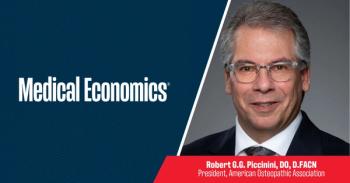
CDC funding change could stifle progress against opioid epidemic, public health leaders say
Key Takeaways
- CDC's proposed $140 million funding cut threatens the Overdose Data to Action Program, crucial for opioid overdose prevention.
- OD2A data is vital for real-time tracking and resource allocation, supporting coordinated local and national overdose response efforts.
Money is on hold, but local health experts say it needs to keep flowing to ensure continuation of prevention and response programs.
There has been
States, territories and localities were to receive a total of $279 million in grants to pay for opioid overdose tracking, prevention and treatment efforts through the Overdose Data to Action Program (OD2A). However, CDC has proposed cutting or freezing $140 million of that, or approximately half the grants administered by the program, according to the
The national nonprofit, a professional association for injury and violence prevention professionals, hosted public health experts for an online media briefing Aug. 4 to explain the situation. They also publicly stated their request for support from new CDC Director Susan Monarez, PhD.
In Washington, D.C., there is an ongoing tug-of-war between Congress and the
The money pays for measures to track and respond to overdose trends in real time, Gilmartin said. Methods range from mapping overdose hotspots, to fatality reviews, to improving prescribing practices, to deploying peer recovery specialist.
“OD2A really enables that coordinated and timely and local action in our communities,” Gilmartin said. It also is the data backbone for the entire national overdose response, with state and federal agencies relying on the OD2A data to allocate their resources, she added.
If that money is cut in half, “what this means, in plain English, is less overdose prevention funding reaching communities, which is right when overdose deaths are remaining a national crisis and we're starting to see reductions,” Gilmartin said.
‘Lost time and lives’
The administration’s Office of Management and Budget has sent a memo to the Injury Center, along with CDC’s National Center for Chronic Disease Prevention and the Office of Readiness and Response, prohibiting them from spending from select line items: adverse childhood experiences, youth violence prevention, firearm research, injury research and injury prevention, Gilmartin said.
“This impacts critical injury and violence prevention work,” she said. “It's creating uncertainty for grantees. It's slowing life-saving programs, and again, it's just this ongoing tug of war between Congress and administration over who gets to control spending. And what happens is that the public health programs are caught in the middle. Every delay in this apportionment process, every delay, every spending freeze, these translate to lost time and lives.”
Signs of progress
The public health leaders noted opioid overdose deaths have decreased by almost 27%, from approximately 110,000 deaths in 2023 to 80,400 in 2024.
That is a result of sustained and coordinated investments, Gilmartin said.
“I have to imagine, if you're a policymaker and you've said to your constituents that you're serious about protecting your constituents from overdose, that you would want to take this partial funding situation very seriously,” she said.
Additional speakers were Raynard Washington, PhD, director of the Public Health Department of Mecklenburg County, N.C.; Hayley Jelinek, health educator for the Two Rivers Public Health Department in Kearney, Nebraska; Tom Simon, former senior director for scientific programs in the CDC Injury Center’s Division of Violence Prevention; and Puthiery Va, DO, director of the Maine Center for Disease Control and Prevention. They agreed the reduction in overdose deaths is good news for the nation, but the work is far from over.
‘Losing lives way too soon’
“As we all know, opioids have been ravaging our communities across this country for more than last decade, and we are starting to make some appreciable progress in reversing the trends that have been escalating in our communities in terms of losing lives way too soon because of opioids,” said Raynard Washington, PhD, director of the Public Health Department of Mecklenburg County, N.C.
In the area around Charlotte, North Carolina, the funding pays for Naloxone, the opioid overdose reversal drug, and coordinated efforts with law enforcement and health experts when overdoses surge in the community, and other work to raise awarenes in the community, Washington said. Without money to cover costs, local departments may face staff layoffs and overall fewer resources to combat the opioid overdose epidemic, he said.
A personal mission
Jelinek described her personal experience of losing her son to overdose when he was living in Florida and using a drug classified as an antidepressant in other countries. To fight future overdoses, measures include distributing Naloxone, speaking to students, and medicine collection days to ensure of safe disposal of pills.
‘The effects … cannot be overstated’
On the macro scale, Simon noted the president’s proposed 2026 budget will cut some programs or move them to the new Administration for a Healthy America. Along with opioid overdose prevention, that will affect work dedicated to unintentional injury, such as drowning prevention and firearm injuries for youths and fall prevention for adults aged 65 and older.
“The effects of the proposed cuts on lives around the country really cannot be overstated,” Simon said. A full 80% of the Injury Center’s budget goes to states and communities that will lose technical support and expertise, while creating an economic ripple effect, Simon said.
Community connections
Maine has seen a reduction in fatal overdoses, Va said. That is worth celebrating — although the numbers are still too high, she added. Maine has created opioid spike alerts, compiling hospital emergency department data and making it actionable to examine circumstances of overdoses.
Those reviews about patients and possible preventive efforts guide actions to connect with health workers, opioid users, their families and community members to stop additional overdoses, she said.
Newsletter
Stay informed and empowered with Medical Economics enewsletter, delivering expert insights, financial strategies, practice management tips and technology trends — tailored for today’s physicians.








